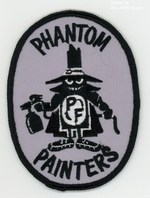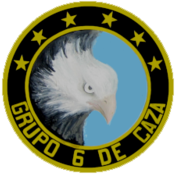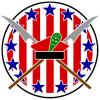Leaderboard
Popular Content
Showing most liked content on 10/26/2021 in Posts
-
9 pointsHunting the trails..... Decided to make a few more tiles & draw some trails on them......going around the trees.....not perfect but better than nothing.
-
4 pointsyou want to know why not to worry about wingmen landing? a got 14 reasons here for you
-
3 pointsCAC CA-15N 'Kangaroo' - No.808 Naval Air Squadron, Royal Australian Navy, 1951
-
3 points
-
3 pointscreate a transparent plane with craters and name it as an immobile boat with several engines, this achieved the emission points of the smoke effect, it can be used in cities or forests to give a devastating effect, for now it is a test and the result it is satisfactory
-
3 points
-
3 pointsMiG-21K is taking off from soviet airfield at Socotra island, the soviet "Gibraltar" in the Gulf of Aden. (Terrain WIP)
-
2 points
-
2 points
-
1 pointDefinitely, you can load any tank that has an autoloader manually. I just thought, It's amazing to actually see it in action. So I decided to share it with you.
-
1 pointA former class-mate of me served out his time at a T-72 regiment. He said loading by hand was possible, but time consuming. You needed around 30 seconds to load the gun, what means 2 rounds per minute. With autoloader it were 8 rounds per minute.
-
1 pointFMA I.Ae.26 Vencejo - Grupo 1 de Caza del Comando Aereo de Defensa, Fuerza Aerea Argentina, 1949 An early step towards establishing the Fuerza Aérea Argentina as a separate branch of the Argentinian Armed Forces was taken during February 1944 when the newly created position of Commander-in-Chief of Aviation was made by the Department of War. This led directly to the creation of the Fuerza Aérea Argentina by decree on January 4th, 1945 with Brigadier Edmundo Sustaita becoming the first Commander of the Air Force shortly afterwards. Sustaita wasted no time in beginning a programme of modernization and in June 1946 he was aided by the incoming President Juan Perón who declared his strong desire for economic independence for Argentina with an ambitious five-year plan to increase wages, achieve full employment, stimulate industrial growth whilst also improving transportation, communication, energy and social infrastructure. Specifically to boost the Argentinian aviation industry President Juan Perón brought three teams of engineers to FMA (Fábrica Militar de Aviones) to drive forward the technological development of Argentinian aviation. One team was led by Émile Dewoitine, one by Kurt Tank and one by the Argentinian-born Daniel Olguin who had worked under the leadership of Edgar Schmued at North American Aviation since 1938. Whilst Dewoitine and Tank were tasked with designing interim and advanced jet fighters (the Pulqui I and the Pulqui II respectively) Olguin's task was to urgently design and manufacture a propeller-driven fighter aircraft under the designation I.Ae.26. It was completely logical for Olguin to start with a design that resembled the North American P-51D but his I.Ae.26 design was subtly different to the American aircraft being longer and having a different airfoil profile (NACA 66) to its laminar flow wings. Powered by a Rolls-Royce Griffon Mk 61 (rated at 2,035 hp) a key feature of the I.Ae.26 design was ease of manufacture and maintenance with a slightly box-like fuselage with detachable panels for ease of access replacing the conic sections of the P-51D. To aid production the airframe was divided into five main sections consisting of the forward fuselage, centre fuselage, tail, left wing and right wing all of which were fitted with wiring and piping before being assembled. Development progressed swiftly with the prototype I.Ae.26 flying for the first time on April 30th, 1947 flown by senior FMA test pilot Miguel Kempes who achieved a calibrated level flight speed of 444 mph at 30,000 ft (8,046 m). Such performance was considered outstanding and the cockpit layout was praised by all FMA test pilots. Kempes gave a spectacular display of the prototype I.Ae.26 at the 'Veinticinco de Mayo' airshow held in Buenos Aires on May 25th, 1947 and, afterwards, President Juan Perón announced a production order for 100 aircraft and also bestowing the name of 'Vencejo' (Swift) on the I.Ae.26. Entering service with Grupo 1 de Caza in August 1948 the Vencejo was popular with Fuerza Aerea Argentina pilots and whilst still in service in 1955 it did not participate in the Revolución Libertadora and was eventually phased out of service towards the end of 1960 when it was replaced by the F-86F Sabre. Skin Credit: Charles
-
1 point
-
1 pointMaybe so. Right after we finish building 1000s of miles of the Ho Chi Minh trail and accurate surrounding elevation. And then finish up 100s of miles of the Vietnamese rail lines. Then we will work on the major road networks.
-
1 pointA-7E VA-81, CVW-17 USS Forrestal 27.11.1979 - 7.5.1980 A-7E VA-83, CVW-17 USS Forrestal 27.11.1979 - 7.5.1980 A-7E VA-46, CVW-1 USS John F. Kennedy 4.8.1980 - 28.3.1981 A-7E VA-72, CVW-1 USS John F. Kennedy 4.8.1980 - 28.3.1981
-
1 point
-
1 pointCraig Brierley was the original creator, he made the model & I made the skins. Craig has'nt been around for a long time though. A 2 seater was never intended but I do have the max files.............somewhere...
-
1 pointI am now very close to releasing the mod for beta testing, so it shouldn't be too much longer before public release. While the new version will have a few more brand new cloud types such as Grey Altocumulus Clouds pictured above and updates to existing cloud types, the bulk of the update consists of revisions to most of the existing WOFF's cloud files, plus the addition of more than 30 additional cloud files, designed specifically to reduce cloud flashing and popping as much as possible. This is the first time that I have approached the cloud flashing problem by focusing mainly on the cloud files instead of cloud types (cloud files are much like building blocks that are used to construct the different cloud types seen in the game). With any luck, the mod will be ready for public release in--you guessed it--two weeks!
-
1 pointit's actually called 'de-spawning" it's usually caused by trans-dimensional rifts created by non-fully calibrated phase-shift hyperdrives
-
1 pointLeseprobe findet ihr hier: https://www.motorbuch-versand.de/product_info.php/info/p12056_Hubschrauber--Transporter-und-Schulflugzeuge-der-NVA.html
Important Information
By using this site, you agree to our Terms of Use, Privacy Policy, and We have placed cookies on your device to help make this website better. You can adjust your cookie settings, otherwise we'll assume you're okay to continue..
















